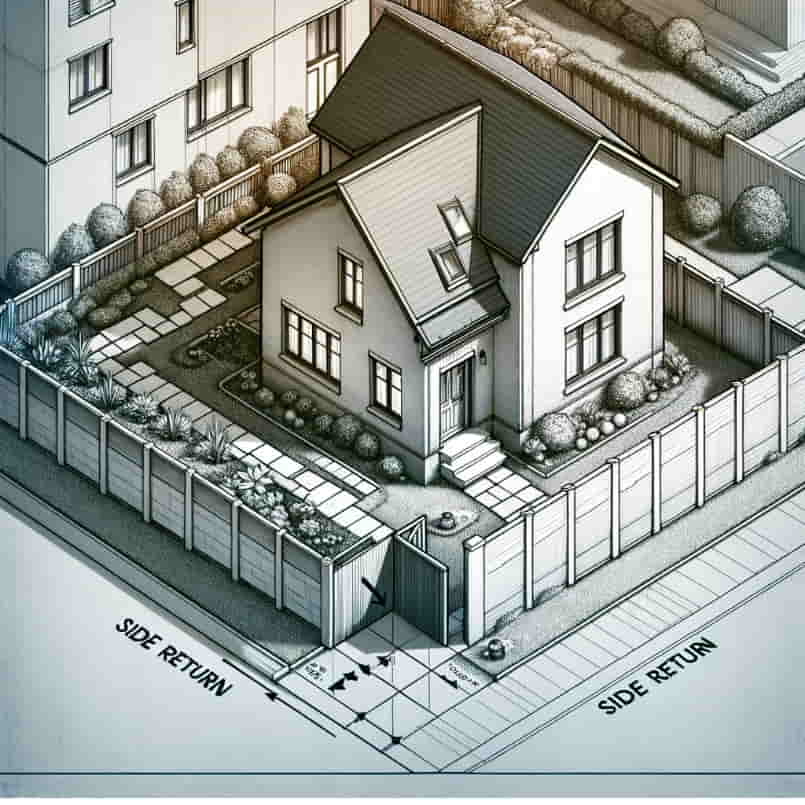Many homeowners find they are running out of room as their families or lifestyle needs change. Building a side return extension can be an effective way to create more living space without the major hassle and expense of moving house. This guide covers everything you need to know about planning and executing this type of home improvement project.
What is a Side Return Extension?
A side return refers to the space along the side wall of a house leading back from the front of the property to the rear. A side return extension builds outwards to extend this footprint, resulting in a wider floorplan. The most common approach is to create a one or two-storey infill extension with a mono-pitched or flat roof that ties into the existing roofline in an L-shape. This additional space can be used as an enlarged kitchen, dining room, family room, home office or extra bedroom.
Benefits of Side Returns
There are many advantages to maximizing your property’s side return potential:
- Cost-effective way to gain floor area – less hassle and expense than relocating
- Enable open-plan living without altering the basic house layout
- Provide natural light from the front and rear of the home
- Flexible space can suit families or home-based businesses
- Added value and future-proofing investment in your home
- Visually consistent with house façade and less disruptive to neighbours
Considerations Before Starting Your Project
While side returns offer fantastic scope for expansion, they do require careful planning:
- Local authority planning permission is usually needed
- Building regulations approval will be required
- Party wall agreements with attached neighbours may be necessary
- Make sure to appoint a professional architect and builder
- Make decisions about layout, specifications and fixtures/fittings upfront
- Factor in contingency funds for unforeseen costs
The side return extension cost in London can vary widely depending on exact specifications and complexity from £20,000 up to £100,000 or more. Always get multiple quotes.
Step-By-Step Guide
Follow these key steps for a smooth side return extension project:
Appoint an Architect
Hire an architect experienced in side return projects to advise and handle planning/approvals. They will maximize available space and provide technical drawings to show builders exactly what is needed. Expect to pay £2,000-£5,000 for smaller projects.
Gain Necessary Approvals
Your architect will submit Local Authority planning applications and Building Regulations consent documents and liaise on your behalf. Party Wall Agreements with adjoining owners may also be needed if excavations come within three metres of the boundary.
Choose a Builder
Get several recommendations and quotes from builders with proven experience handling side returns. Look for membership in trade associations and check references/examples of previous work. Agree on a contract upfront.
Commence Construction
Once the initial demolition and preparation works are complete, the builder can start constructing the new foundations, walls, roof and windows. The project timeline can range from 8 weeks up to 6 months depending on factors like the removal of internal/external walls.
Finish Fixtures and Fittings
Decisions will be needed on fixtures like kitchen cabinets, flooring, lighting, paint colours and landscaping outside. The small details make all the difference in maximizing use of the new living space.
Completion and Compliance
The builder will coordinate final inspections, certificates and sign-off from building control. And then you can start enjoying your brand new side return extension!
Hopefully, this guide has provided a helpful overview of the entire process involved in planning and executing a side return extension on your home. Unlocking that under-utilized side space can truly transform what your property can offer. Do your research to find the right architect and builder, set a realistic budget and don’t cut corners – the investment will pay dividends for many years to come in terms of added value and enhanced living potential.

Leave a Reply